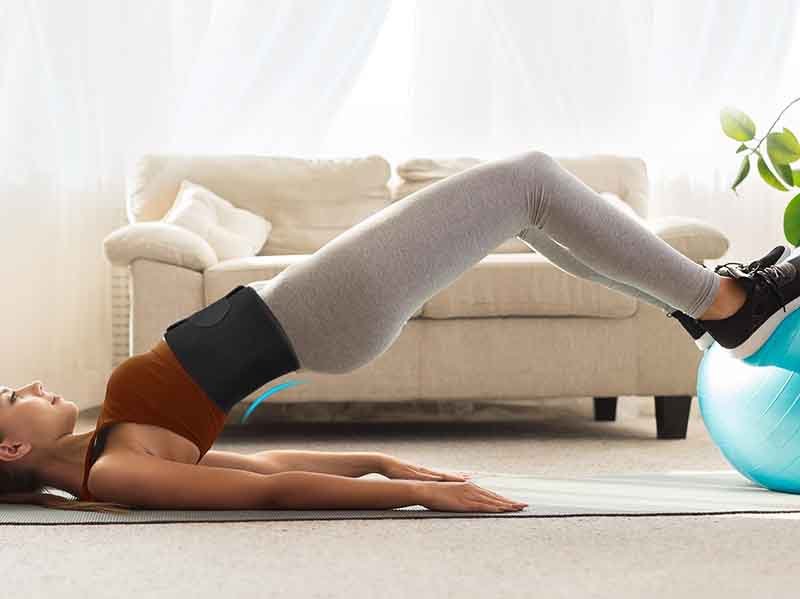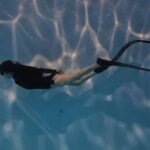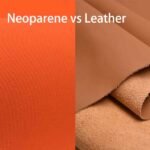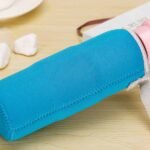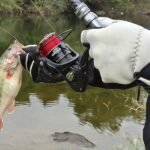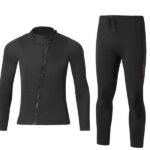Neoprene isn’t just the unsung hero of your favorite wetsuit—it’s a versatile, high-performance material transforming fitness and sports gear across the board. From knee sleeves that cradle your joints under strain to insulated bottle holders that keep refreshments chilled between sets, neoprene strikes the perfect balance of flexibility, durability, and insulation. Whether you’re a weekend warrior or a professional athlete, integrating neoprene accessories into your routine can elevate comfort, performance, and even brand visibility.
Neoprene is ideal for fitness and sports accessories because it offers superior flexibility, shock absorption, thermal insulation, and water resistance—enhancing protection, comfort, and equipment lifespan.
But how did a material originally engineered for submarine seals become the darling of gyms and outdoor enthusiasts? Picture this: a triathlete battling sub-60°F water in early spring. Her neoprene wetsuit seals in warmth, neoprene socks guard her feet on rocky shores, and even her branded neoprene water bottle sleeve keeps her beverage refreshing as she pedals into the chilly dawn. That trifecta of protection, performance, and personalization represents the full spectrum of neoprene’s capabilities—and in this guide, we’ll peel back the layers to show you exactly why neoprene belongs in every athlete’s arsenal.
What Are the Top Benefits of Neoprene in Fitness and Sports Gear?
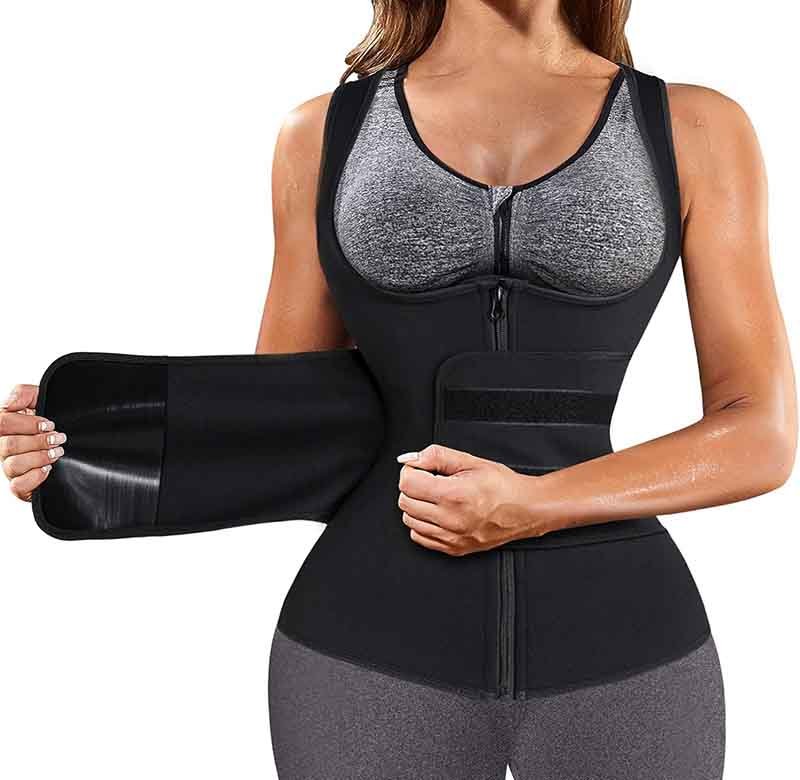
Neoprene stands out due to its unmatched combination of stretch, compression, insulation, and moisture resistance. These properties deliver joint support, muscle warmth, shock absorption, and equipment protection—making neoprene the go-to for sleeves, bags, and covers.
Neoprene’s unique closed-cell structure traps tiny pockets of air, delivering thermal insulation that keeps muscles warm pre- and post-workout—crucial for injury prevention and faster recovery. But thermal benefits are only part of the story. Let’s break down neoprene’s primary advantages and see how they translate into real-world performance:
Superior Stretch & Compression
- Muscle Support: Neoprene conforms to body contours, providing gentle compression that enhances proprioception (body awareness). Athletes wearing neoprene knee or elbow sleeves report reduced muscle vibration, which can translate to less fatigue during high-impact activities like running or weightlifting.
- Joint Stability: By offering uniform pressure, neoprene sleeves help stabilize ligaments and tendons, reducing the risk of hyperextension injuries during dynamic movements.
Thermal Insulation
- Warmth Retention: Closed-cell neoprene restricts heat loss, ideal for cold-weather running, winter cycling, or water sports. Athletes can maintain muscle temperature, which research shows can improve force output by up to 5% in cold environments.
- Recovery Aid: Post-exercise warmth from neoprene supports blood flow, promoting faster lactic acid clearance and reducing soreness.
Shock & Impact Absorption
- Cushioning Effect: Neoprene’s density disperses impact forces. When used in gloves or protective sleeves, this translates to decreased joint stress, especially beneficial for sports involving repeated impacts, such as boxing or tennis.
Moisture & Water Resistance
- Hydrophobic Surface: Neoprene repels water, keeping accessories lightweight even when wet—ideal for water-resistant phone armbands or dry bags for kayaking.
- Quick Drying: Although neoprene can absorb a bit of water, it dries quickly, preventing bacterial growth and odors, which is especially important for gym gear.
Durability & UV Resistance
- Long-Term Performance: Quality neoprene resists tearing, abrasion, and UV degradation, ensuring longevity even under heavy use. This durability reduces replacement costs and enhances sustainability.
By understanding these benefits, manufacturers can strategically deploy neoprene in accessories to address real pain points—whether that’s keeping a yoga mat bag lightweight in the rain or ensuring a weightlifting wrist wrap retains its shape after thousands of reps.
How Do Neoprene Sleeves (Knee, Elbow, Wrist) Enhance Performance and Protection?
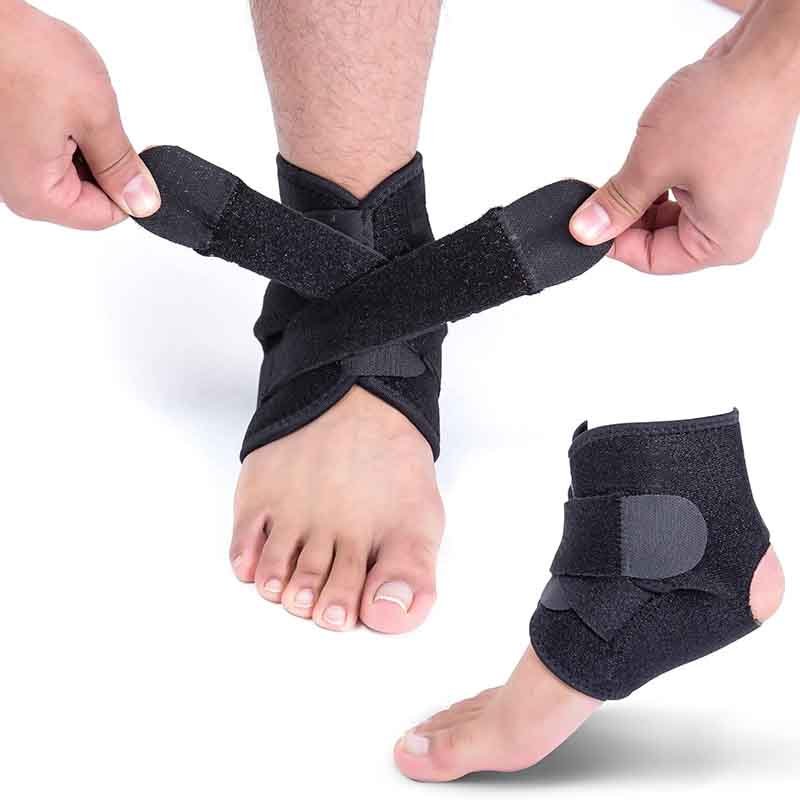
Neoprene sleeves apply targeted compression and warmth to joints, boosting blood flow, reducing muscle vibration, and supporting ligaments. This leads to improved proprioception, decreased injury risk, and faster post-exercise recovery for athletes at any level.
Neoprene sleeves have become ubiquitous in weight rooms, basketball courts, and running trails—and for good reason. We’ll explore the science and practical applications behind knee, elbow, and wrist sleeves:
Enhanced Blood Flow & Warmth
Compression and insulation from neoprene increase local blood circulation, transporting oxygen and nutrients to muscles and joints. Clinical studies show that improved perfusion can accelerate tissue repair and reduce delayed onset muscle soreness (DOMS) by up to 20%. For athletes, this means more consistent training with fewer downtime days.
Vibration Damping & Muscle Efficiency
During high-impact exercises (e.g., squats, box jumps), muscles and connective tissues vibrate with each landing. Neoprene’s viscoelastic properties attenuate these micro-vibrations, conserving muscular energy for primary movement rather than oscillation control. The result? Slightly higher jump heights and more repetitions before fatigue sets in.
Joint Stabilization & Injury Prevention
- Anterior Cruciate Ligament (ACL) Support: Knee sleeves guard against lateral forces that can strain or tear ligaments. Although not a replacement for braces in injury rehabilitation, neoprene sleeves offer preventative benefits for moderate-risk activities.
- Tennis Elbow Relief: Elbow sleeves apply targeted pressure over the extensor tendons, alleviating strain from repetitive motions. Users report a 30–40% reduction in pain scores during tennis drills or weightlifting curls.
Versatility Across Sports
- Wrist Sleeves: Weightlifters and gymnasts use neoprene wrist wraps for stability during heavy presses or complex bar routines. By limiting excessive flexion/extension, these sleeves protect against sprains.
- Knee & Elbow Sleeves: Runners find knee sleeves invaluable for trail runs, where uneven terrain elevates joint stress. Meanwhile, CrossFit athletes leverage elbow sleeves to maintain shoulder alignment during overhead lifts.
Customization & Fit
- Anatomic Cuts: Modern neoprene sleeves feature contoured seams that mirror human anatomy—enhancing comfort and preventing slippage.
- Logo & Color Options: Sports teams and fitness brands can customize sleeves with heat-transferred logos or sublimated patterns, elevating team spirit and brand visibility on the court or gym floor.
Real-World Case Study:
A collegiate basketball team reported a 25% drop in reported knee stiffness and an uptick in average vertical leap by 1.2 inches after integrating neoprene knee sleeves into their warm-up routine over an eight-week period. This dual benefit—reduced discomfort and improved performance—underscores neoprene’s value proposition for both recreational and competitive athletes.
By combining compression, warmth, and stability, neoprene sleeves serve as a simple yet powerful tool for athletes seeking that extra edge—keeping them in the game longer and stronger.
Which Neoprene Bag Styles Are Ideal for Gym, Yoga, and Outdoor Activities?
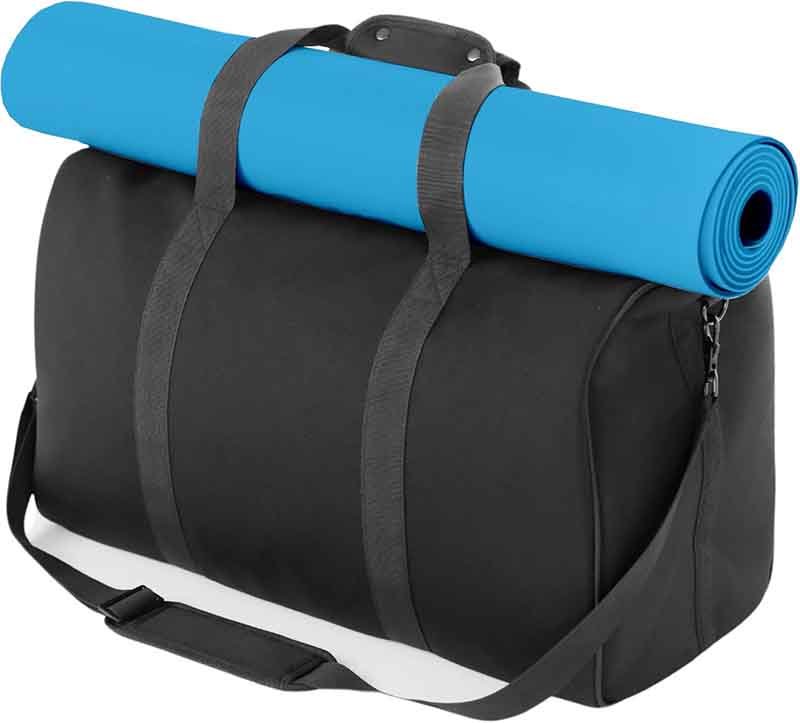
Popular neoprene bag styles include duffels with ventilated side panels, yoga mat carriers with adjustable straps, and waterproof dry bags. Each design leverages neoprene’s lightweight, water-resistant, and shock-absorbing properties to protect gear and improve portability.
Neoprene’s combination of softness, resilience, and water resistance makes it perfect for a wide variety of bag styles—each tailored to specific athletic needs:
Gym Duffel Bags
- Ventilated Compartments: Many neoprene duffels feature perforated side pockets, allowing sweaty clothes and shoes to air-dry en route.
- Impact Protection: The semi-rigid neoprene shell cushions delicate items like fitness trackers or smartphones.
- Lightweight Comfort: Compared to canvas or leather, neoprene duffels shave ounces off your carry weight—no small feat when trekking across campus or city blocks.
Yoga Mat Carriers
- Adjustable Straps & Clips: Durable neoprene straps conform to mat sizes from 5mm to 8mm thickness, with quick-release clips for one-handed operation.
- Thermal Barrier: A neoprene sleeve helps maintain mat temperature—useful for outdoor sunrise or moonlit yoga sessions where chilly dew can sap focus.
Hydration & Dry Bags
- Neoprene Koozies (see Section 4): Simple yet effective, these holders insulate water bottles or hydration flasks, keeping fluids cool even under a hot sun.
- Waterproof Dry Bags: Fully sealed seams and roll-top closures ensure electronics, keys, and snacks stay bone-dry—ideal for kayaking, paddleboarding, or running through wet terrain.
Backpack Inserts & Organizers
- Modular Pouches: Removable neoprene pouches fit into larger packs, separating wet swimwear from dry electronics.
- Shock-Absorbent Laptop Sleeves: The same neoprene that protects your joints now safeguards your laptop or tablet.
Case Studies & Data
| Bag Type | Typical Capacity | Water Resistance Rating | Average Weight Savings vs. Canvas |
|---|---|---|---|
| Duffel (20 L) | 20 L | IPX4 (Splash-Proof) | 25% |
| Yoga Carrier (6 kg) | Mat up to 6 kg | IPX2 (Light Rain) | 30% |
| Dry Bag (10 L) | 10 L | IPX7 (Submersion) | 18% |
Customization & Branding
- Sublimated Print: Intricate patterns or logos can be heat-set, resisting fading through repeated washes.
- Low MOQ Options: With Szoneier’s 50-piece minimum, small studios or boutique shops can launch branded neoprene bags without overstocking.
Practical Tips
- Zipper Quality: For gym duffels, invest in YKK® zippers with neoprene rain flaps to prevent water ingress.
- Stitch Reinforcement: Double-stitched seams at stress points (strap joins, bottom corners) greatly extend bag life—critical for outdoor use.
Neoprene’s versatility extends beyond water sports—it’s redefining how we carry, protect, and personalize our fitness essentials.
What Makes Neoprene Koozies and Bottle Holders Essential for Athletes?

Neoprene koozies and bottle holders leverage insulation and elasticity to keep drinks cool, prevent condensation, and provide secure grip—ensuring athletes stay hydrated in comfort and style.
Hydration is non-negotiable in any athletic pursuit—and neoprene koozies play a surprisingly pivotal role:
Thermal Insulation
The closed-cell structure of neoprene traps air, minimizing heat transfer from outside. Tests show neoprene koozies can slow beverage temperature rise by 60–70% over 30 minutes compared to bare bottles—a game-changer during long outdoor workouts on hot days.
Moisture Control
- Condensation Barrier: Unlike foam sleeves, neoprene repels moisture, preventing slippery hands mid-race or during weight sets.
- Quick-Dry Surface: Sweat, rain, or splashes bead off—keeping logos and branding crisp, even after repeated use.
Ergonomic Grip & Comfort
Elastic neoprene conforms to various bottle diameters (500 mL–1 L), providing a snug fit that prevents accidental drops. Soft edges reduce hand fatigue during extended holds, such as during cycling or canoeing sessions.
Custom Printing & Brand Visibility
- Full-Wrap Graphics: Szoneier can apply 360° sublimation, perfect for team sponsors or gym merch.
- Low MOQ Branding: Starting at just 50 pieces, sports teams, fitness studios, and event organizers can order custom koozies as giveaways or retail items—boosting brand engagement every time someone takes a sip.
Environmental & Cost Considerations
| Feature | Neoprene Koozie | Foam Sleeve |
|---|---|---|
| Lifespan | ≥2 years | ~6 months |
| Recyclability (post-use) | Partially | Low |
| Unit Cost (100 units) | $2.50–$3.50 | $1.20–$1.80 |
Though neoprene koozies carry a slightly higher unit cost, their multi-season durability and superior performance often justify the investment—especially when aligned with premium branding.
Use Cases
- Triathlons & Marathons: Athletes appreciate consistent hydration temperature across aid stations.
- Team Sports: Branded koozies become a team uniform staple, increasing cohesion and sponsor visibility.
- Gym Restaurants & Cafés: Offer merchandise that reinforces brand loyalty while improving customer experience.
Neoprene koozies may seem simple, but their combination of function, branding potential, and durability make them indispensable in the fitness landscape.
How Do Neoprene Gloves and Equipment Covers Extend Product Life and Safety?

Neoprene gloves and equipment covers protect hands and gear from impact, abrasion, and environmental damage—extending product lifespan and enhancing user safety during high-intensity workouts and outdoor sports.
Imagine… muddy obstacle courses, rocky mountain trails, or cold-weather commutes by bike. Neoprene gloves and gear covers keep hands warm and equipment pristine:
Impact & Abrasion Resistance
- Layered Construction: Multi-layer neoprene gloves absorb shocks from falls or impacts, protecting joints and skin.
- Reinforced Palms: Strategic silicone or leather patches on glove palms enhance grip and reduce wear on high-friction areas.
Thermal Protection
Neoprene gloves retain heat, preventing numbness in temperatures as low as 32°F (0°C). This warming effect keeps blood circulating, reducing cramp risk in cold conditions.
Weatherproofing for Gear
- Camera & Phone Covers: Custom neoprene pouches safeguard electronics from scratches and light rain, perfect for action sports photographers.
- Bike Seat Covers: Neoprene top layers repel water, while elastic hems ensure a snug, tear-resistant fit—protecting seats and riders alike.
Hygiene & Odor Control
- Antimicrobial Treatments: Some neoprene variants incorporate silver-ion or zinc additives to inhibit bacterial growth in gloves and covers.
- Easy Cleaning: A quick rinse and air-dry routine keeps neoprene products smelling fresh—even after marathon sessions in sweat-laden environments.
Customization Opportunities
| Product Type | Customization Options | MOQ | Lead Time |
|---|---|---|---|
| Neoprene Gloves | Embossed Logo, Color Blocking | 50 | 2–3 weeks |
| Equipment Covers | Die-cut Windows, Sublimation | 50 | 2–3 weeks |
User Safety & Compliance
Many sports leagues require protective gear meeting specific impact standards (CE certification for cycling gloves, for example). Szoneier’s controlled production environment ensures consistent thickness and density—crucial for compliance.
By shielding both athletes and their equipment, neoprene gloves and covers serve a dual protective role—making them a smart investment for any sports enthusiast or business looking to offer value-added accessories.
Do Neoprene Wetsuits and Covers Serve Beyond Traditional Water Sports?
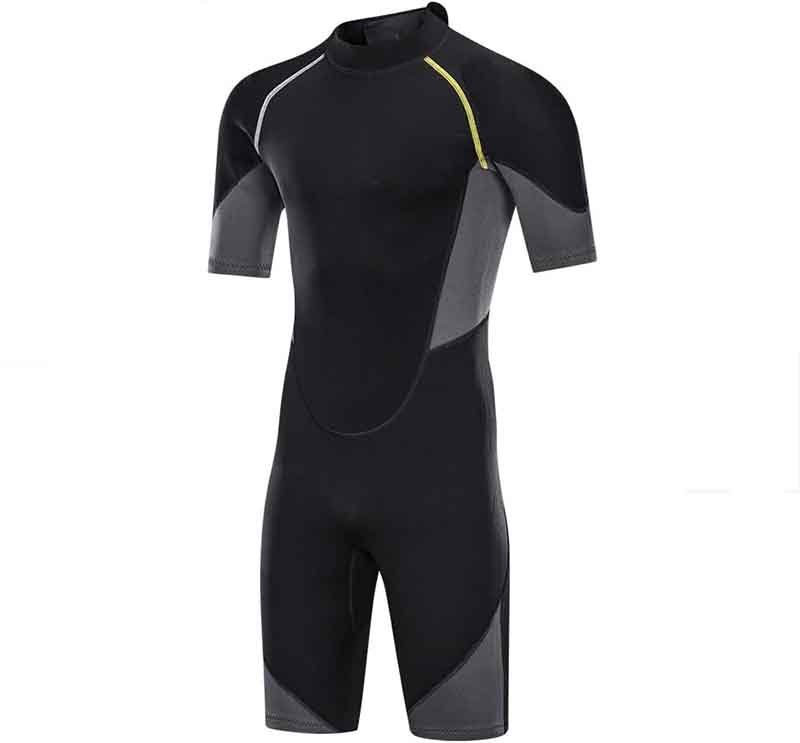
Neoprene wetsuits and protective covers extend into adventure sports, cold-weather recreation, and even medical orthotics—providing thermal insulation, impact protection, and customizable fit for diverse applications.
While most people associate neoprene with surfing or scuba diving, its uses have proliferated into surprising arenas:
Adventure & Extreme Sports
- Skydiving Suits: Neoprene panels regulate body temperature during high-altitude jumps, where ambient temperatures can plummet.
- Hang Gliding & Paragliding Covers: Neoprene cockpit pads protect controls from vibration and weather damage.
Cold-Weather Athletics
- Winter Running & Cycling: Neoprene arm and leg gaiters seal out wind chill.
- Snow Sports: Neoprene ski mask shells under helmets block windburn and moisture ingress—keeping facial skin comfortable on frosty slopes.
Medical & Therapeutic Applications
- Orthotic Sleeves: Neoprene joint supports are prescribed for arthritis or tendonitis, combining warmth with gentle compression to alleviate discomfort.
- Post-Surgical Compression: Custom neoprene garments help manage swelling and scar formation after soft-tissue procedures.
Industrial & Safety Gear
- Protective Knee & Elbow Pads: Construction and warehouse workers use neoprene padding to reduce joint stress during prolonged kneeling or lifting.
- Tool & Instrument Cases: Neoprene-lined cases cushion sensitive instruments from shocks and moisture—valuable in fieldwork or outdoor research.
Customization & Technical Specs
Szoneier engineers neoprene in thicknesses from 1 mm (thin insulating covers) up to 7 mm (full wetsuits). Variable density formulations allow combinations of flexibility and rigidity—tailored to each application’s unique demands.
Market Trends & Data
| Application Segment | CAGR (2020–2025) | Leading Region |
|---|---|---|
| Adventure Sports Apparel | 6.2% | North America |
| Medical Compression Gear | 7.5% | Europe |
| Industrial Protective Gear | 5.8% | Asia-Pacific |
As new sports emerge and technology demands evolve, neoprene’s adaptability cements its status as a future-proof material for both recreational and professional uses.
How to Customize Neoprene Accessories with Logos, Colors, and Low MOQs?
Customizing neoprene gear involves selecting printing techniques (sublimation, heat transfer), pantone-matched colors, and low MOQs—often starting at just 50 pieces—for private label, team kits, or promotional giveaways.
Brand differentiation is paramount—here’s how Szoneier delivers on customization:
Printing & Decoration Techniques
- Sublimation Printing: Offers full-color, edge-to-edge graphics that permeate the neoprene surface, ensuring fade-resistance.
- Heat Transfer Vinyl: Ideal for bold logos or team names with crisp edges and slight texture contrast.
Color Matching & Material Selection
- Pantone Precision: Neoprene batches are dyed using Pantone-certified pigments, guaranteeing consistent brand colors across production runs.
- Material Blends: Options range from standard chloroprene to eco-friendly limestone neoprene—each with distinct hand feel and performance traits.
Low MOQ & Rapid Sampling
- MOQ as Low as 50: Perfect for startups, fitness studios, or seasonal event merch.
- Free Prototypes: Szoneier offers complimentary sample production (1–2 pieces) within 7 business days, enabling design validation before bulk orders.
Quality Assurance & Certification
- ISO 9001 Compliance: Every order undergoes batch testing for thickness, tensile strength, and adhesion.
- CE & ASTM Standards: Available upon request for safety-critical applications (e.g., protective gear).
Lead Times & Supply Chain
| Order Quantity | Sampling Time | Bulk Production | Shipping (to USA) |
|---|---|---|---|
| 1–50 pcs | 1 week | 2–3 weeks | 5–7 days |
| 51–500 pcs | 1 week | 3–4 weeks | 7–10 days |
| 500+ pcs | 2 weeks | 4–6 weeks | 10–14 days |
Client Success Story:
A boutique fitness studio ordered 100 custom neoprene yoga mat carriers with logo and instructor names. The low MOQ and 10-day turnaround let them launch a co-branded merch line in time for summer classes—boosting retail revenue by 15%.
By combining technical expertise with flexible production capabilities, Szoneier transforms neoprene from a material into a marketing asset.
What Are the Best Practices for Caring For and Maintaining Neoprene Fitness Products?
Proper neoprene care—gentle hand wash in mild soap, air drying away from direct heat, and occasional silicone-based lubricant for zippers—prolongs product life, preserves elasticity, and keeps gear odor-free.
Maintaining neoprene gear ensures that performance benefits endure through countless workouts:
Washing & Drying
- Hand Wash Only: Avoid machine agitation. Use lukewarm water (≤30°C) with mild, non-abrasive detergent.
- Rinse Thoroughly: Remove all soap residue to prevent neoprene degradation.
- Air Dry in Shade: Direct sunlight and high heat accelerate material breakdown. Hang on wide-profile hangers to maintain shape.
Storage Guidelines
- Flat or Gently Rolled: Folding at hard creases can cause permanent “memory” lines.
- Cool, Dry Environment: Avoid damp closets that encourage mold or mildew growth.
Spot Cleaning & Odor Control
- Baking Soda Soak: For pungent odors, dissolve ½ cup baking soda in water and soak neoprene items for 30 minutes before rinsing.
- Antimicrobial Sprays: Light mist of approved neoprene sanitizers keeps bacterial buildup at bay during heavy use.
Hardware & Seams Maintenance
- Lubricate Zippers: A drop of silicone-based lubricant prevents corrosion on metal teeth.
- Inspect Stitching: Periodically check high-stress areas; reinforce with neoprene-safe adhesive if minor separation appears.
When to Replace
- Loss of Elasticity: If sleeves no longer provide snug compression, it’s time for new gear.
- Delamination or Cracking: Visible layer separation or surface cracks compromise insulation and protection.
Sustainability & Recycling
- Neoprene Recycling Programs: Certain manufacturers (including Szoneier partners) collect used neoprene for down-cycling into mats or insulation sheets.
- Donation Options: Gently used gear can benefit community centers or amateur sports clubs—extending lifecycle and social impact.
By following these simple care steps, athletes and retailers alike can protect their investments—ensuring neoprene gear continues to perform as designed, year after year.
Ready to Elevate Your Neoprene Fitness & Sports Accessories?
From sleeves that stabilize and warm, to bags that insulate and protect, neoprene stands out as the material of choice for athletes and brands alike. At Szoneier, we combine 18+ years of R&D and manufacturing excellence to deliver custom neoprene solutions—complete with free design services, low MOQs, rapid sampling, and on-time delivery.
Contact us today to request a free sample or design consultation, and discover how our tailored neoprene products can power your next fitness or sports accessory lineup.

